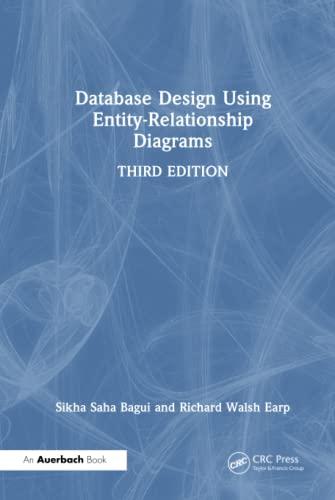Question
Hi I need help in MIPS assembly language. the program below applies a merge sort algorithm. Originally It is supposed to only accept 2^n numbers
Hi I need help in MIPS assembly language. the program below applies a "merge sort" algorithm. Originally It is supposed to only accept 2^n numbers of inputs, but I want to change it. can you change it to accept any number less than 32 instead of just 2^n? and Can you please write comments so I understand what it does.?
Code:
.data list: .space 1000 left: .space 1000 right: .space 1000 n: .word 0 arraySize: .word 0 arrayEndAddress:.word 0 prompt1: .asciiz "Enter n: " prompt2: .asciiz "Enter element " dialog1: .asciiz "The size of array entered is not power of 2!" dialog2: .asciiz "The sorted list is: " space: .asciiz " " colon: .asciiz ": " eol: .asciiz " "
.text main: la $a0, prompt1 li $v0, 4 syscall li $v0, 5 syscall sw $v0, n lw $t1, n sll $t1, $t1, 2 li $t2, 1 li $t0, 0 writeElements: bge $t0, $t1, done la $a0,prompt2 li $v0, 4 syscall move $a0, $t2 li $v0, 1 syscall add $t2, $t2, 1 la $a0,colon li $v0, 4 syscall li $v0, 5 syscall sw $v0, list($t0) add $t0, $t0, 4 j writeElements done: sw $t0, arrayEndAddress la $t1, list sub $t0, $t0, $t1 sw $t0, arraySize jal mergesort jal printArray exit: li $v0, 10 syscall
mergesort: add $sp, $sp, -4 sw $ra, 0($sp) lw $t0, n sub $t0, $t0, 1 li $t1, 1 for1: li $t2, 0 li $t3, 0 li $t4, 0 for2: addu $t3, $t2, $t1 sub $t3, $t3, 1 sll $t4, $t1, 1 addu $t4, $t4, $t2 sub $t4, $t4, 1 findmin: blt $t4, $t0, setmin move $t4, $t0 setmin: move $t4, $t4 jal merge sll $t5, $t1, 1 addu $t2, $t2, $t5 blt $t2, $t0, for2 sll $t1, $t1, 1 ble $t1, $t0, for1 mergesortDone: lw $ra, 0($sp) add $sp, $sp, 4 jr $ra
merge: addi $sp, $sp, -20 sw $t0, 0($sp) sw $t1, 4($sp) sw $t2, 8($sp) sw $t3, 12($sp) sw $t4, 16($sp) lw $s2, 8($sp) lw $s3, 12($sp) lw $s4, 16($sp) addi $t0, $s3,1 sub $t0, $t0, $s2 sub $t1, $s4, $s3 li $t3, 0 li $t4, 0 for3: add $s5, $s2, $t3 sll $s5, $s5, 2 lw $t5, list($s5) sll $s6, $t3, 2 sw $t5, left($s6) addiu $t3, $t3, 1 sltu $t9,$t3, $t0 bne $t9, $0, for3 for4: addi $s5, $s3,1 add $s5, $s5, $t4 sll $s5, $s5, 2
lw $t5, list($s5) sll $s6, $t4, 2 sw $t5, right($s6) addi $t4, $t4, 1 sltu $t9, $t4, $t1 bne $t9, $0, for4 li $t3, 0 li $t4, 0 move $s0, $s2 while1: slt $a2, $t3, $t0 slt $a3, $t4, $t1 and $v1,$a2, $a3 beqz $v1, while2 sll $s2, $t3, 2 lw $t5, left($s2) sll $s3, $t4, 2 lw $t6, right($s3) sll $s4, $s0, 2 if: bgt $t5, $t6, else sw $t5, list($s4) addi $t3, $t3, 1 b loop else: sw $t6, list($s4) addi $t4, $t4, 1 b loop loop: addi $s0, $s0, 1 j while1 while2: bge $t3, $t0, while3 sll $s2, $t3, 2 lw $t5, left($s2) sll $s4, $s0, 2 sw $t5, list($s4) addi $t3, $t3, 1 addi $s0, $s0, 1 j while2 while3: bge $t4, $t1, doneMerge sll $s2, $t4, 2 lw $t5, right($s2) sll $s4, $s0, 2 sw $t5, list($s4) addi $t4, $t3, 1 addi $s0, $s0, 1 j while3 doneMerge: lw $t2, 8($sp) lw $t1, 4($sp) lw $t0, 0($sp) addi $sp, $sp, 20 jr $ra printArray: add $sp, $sp,-4 sw $ra, 0($sp) la $a0, dialog2 li $v0, 4 syscall li $t0, 0 lw $t1, n loop1: bge $t0, $t1, donePrint sll $s0, $t0, 2 lw $a0, list($s0) li $v0, 1 syscall la $a0, space li $v0, 4 syscall add $t0, $t0, 1 j loop1 la $a0, eol li $v0, 4 syscall donePrint: lw $ra, 0($sp) jr $ra
Step by Step Solution
There are 3 Steps involved in it
Step: 1

Get Instant Access to Expert-Tailored Solutions
See step-by-step solutions with expert insights and AI powered tools for academic success
Step: 2

Step: 3

Ace Your Homework with AI
Get the answers you need in no time with our AI-driven, step-by-step assistance
Get Started


